A nation’s daughters in peril
In a year shadowed by violence and uncertainty, Bangladesh's girls have stood where courage is tested most. They are the first to lose when systems fail, yet the first to rise when the world needs rebuilding. From classrooms to clinics, protest lines to policy tables, they lead with resilience beyond their years.
This year's theme -- "The girl I am, the change I lead: Girls on the frontlines of crisis" -- is both a celebration and a warning. Behind the data on violence and discrimination are girls who refuse silence, mothers who teach defiance, fathers who learn to listen.
They are not waiting for permission. They are already redefining what it means to grow up a girl.
Here's to their courage, their brilliance, their fight.
Here's to the girls of the world!
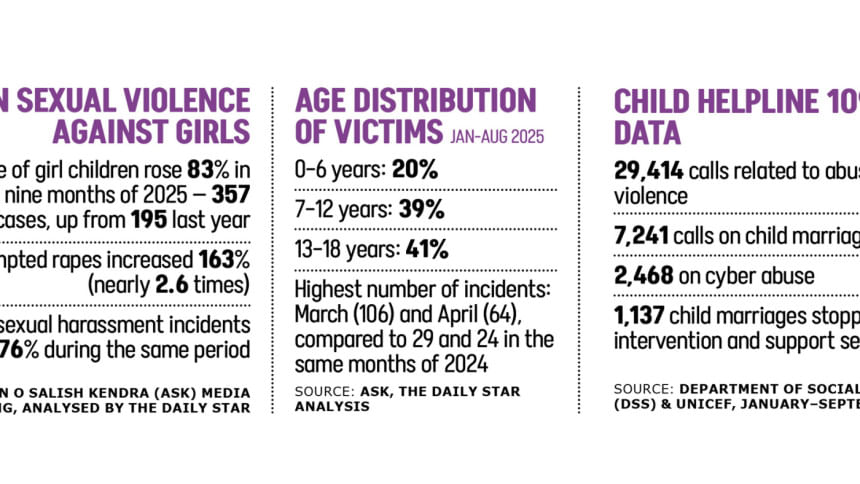
On October 2, an eight-year-old girl playing near a puja temple was raped by 55-year-old Vajendra Sarkar in Gazipur's Kashimpur. Relatives and neighbours found her with her mouth tied with a gamchha.
Just a day before, a 15-year-old Garo girl was raped by an auto-rickshaw driver in Mymensingh's Haluaghat while returning home. Instead of dropping her off, he took her to a deserted spot, raped her, and abandoned her by the roadside.
A week earlier, a six-year-old's body was recovered from a septic tank in Shariatpur's Bhedarganj upazila after she had gone missing for two days. Her aunt reportedly killed her over a family dispute, but the autopsy revealed she was sexually assaulted first.
These incidents are not isolated. They represent a deepening nationwide crisis of violence against girls, despite Bangladesh's commitments under the Beijing Platform for Action, CEDAW, and SDG-5, which focus on achieving gender equality and empowering all women and girls.
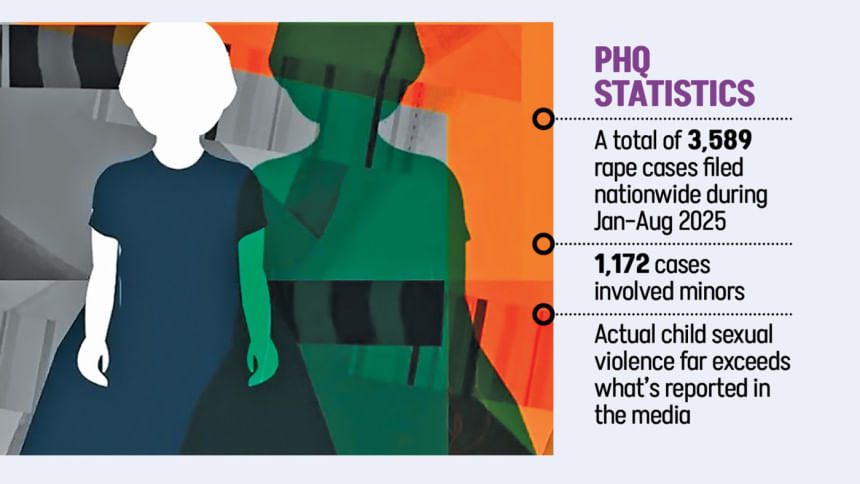
A Daily Star analysis based on Ain o Salish Kendra (ASK) data shows rape of girl children rose by 83 percent in the first nine months of this year -- from last year's 195 to 357 cases. Attempted rapes increased by 163 percent, and sexual harassment by 76 percent.
The ages of the victims highlight the crisis: in the first eight months this year, 20 percent of rape victims were aged 0–6, 39 percent aged 7–12, and 41 percent aged 13–18. The highest number of cases were recorded in March and April, with 106 and 64 incidents respectively, compared to 29 and 24 in theses last year.
According to the National Girl Child Advocacy Forum (NGCAF), at least 390 girls were raped and 134 faced rape attempts in the first eight months of 2025, compared with 224 and 32 last year. Eighty-three girls were murdered during this period.
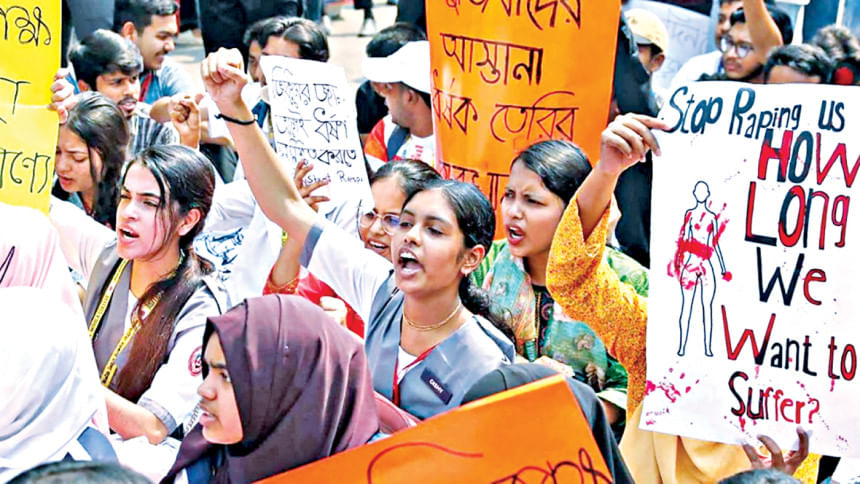
While ASK and NGCAF data show a sharp rise, police statistics reveal an even bleaker picture. From January to August, 3,589 rape cases were filed nationwide – 1,172 involving minors – suggesting the true scale of violence is far greater than what media reports capture.
The growing crisis is also reflected in the soaring demand for emergency help. The national emergency helpline 999 received 25,412 calls under the "Violence against Women and Children" category between January and September this year. These included 903 rape cases, 504 attempted rapes, 704 stalking incidents, 647 homicides, and 656 cases of sexual harassment. There were also 356 calls concerning violence against children and 2,434 about child marriage.
Inspector Anwar Sattar of 999 said most calls likely involved minors. "Children themselves often call for help, while parents, teachers, or neighbours report incidents on their behalf."
The 24/7 child helpline 1098, run by the Department of Social Services with UNICEF support, handled 29,414 calls related to abuse and violence during the same period, along with 7,241 concerning child marriage and 2,468 involving cyber abuse. It helped stop 1,137 child marriages and provided counselling, legal aid, and financial support.
YOUNG VICTIMS, YOUNG PERPETRATORS
A Mahila Parishad report from August 2025 found that both victims and perpetrators are mostly young, with adolescents and men under 30 forming the majority of the accused. Around 60 percent of rape victims were under 18, and girls in grades 6–10 faced the highest rates of sexual violence. Those in grades 1–5 were most often victims of rape.
"It is alarming that so many perpetrators are adolescents," said Afroza Arman, senior training and research officer at Mahila Parishad. "Nearly one-third of rapists are aged 11–30, a quarter of gang rapists are 16–25, and most accused in stalking and cybercrime cases are 16–30."
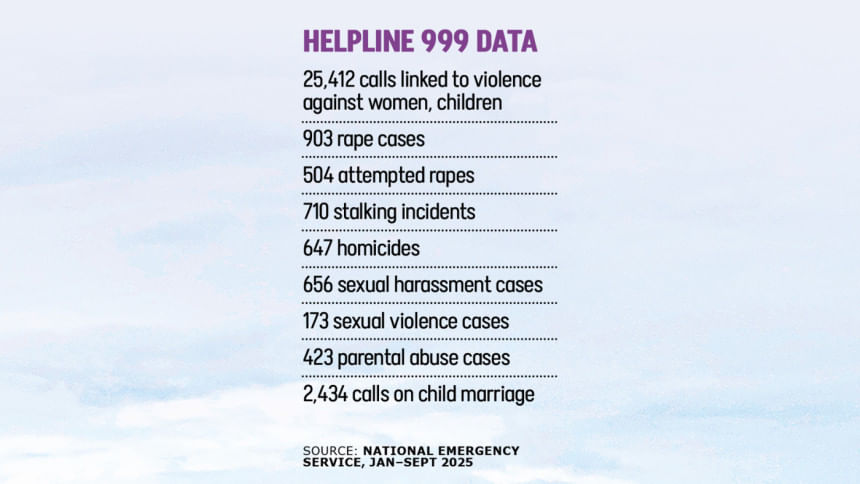
Dangers exist in both public and private spaces -- at home, at neighbours' houses, and even on the way to school. Many attacks are carried out by classmates, boyfriends, ex-husbands, or neighbours, showing that abuse often comes from within trusted circles.
Experts say the new Child Rape Crime Repression Tribunals and setting case deadlines are steps forward, but laws alone cannot tackle a problem rooted in everyday life and deepened by digital exposure.
Chowdhury Md Mohaimen, manager of helpline 1098, said, "Many parents say children today have become unruly, but the challenge is adapting parenting to a world shaped by technology and social media." He added that weak supervision and poor communication leave children vulnerable to exploitation and risky behaviour.
Mahila Parishad President Dr Fauzia Moslem said the education system is failing to teach respect for women. "Lessons on equality and consent are missing, allowing misogyny to take root. Safe recreational spaces are disappearing, leaving children to fill the void in unhealthy ways."
She urged reviving local Nari Nirjaton Protirodh committees and involving community figures like Tottho Apas to raise awareness and drive action.
Dr Prakash Kanti Chowdhury, joint secretary of the women and children affairs ministry, said a new Tk 309.39 crore project titled "Strengthening Integrated Services to Prevent and Respond to Violence Against Women and Children and Quick Response Team Activities" has been launched, replacing the previous Multi-Sectoral Programme on Violence Against Women.
The initiative will ensure that Quick Response Teams from union to district levels respond within 24 hours of an incident being reported, providing medical, forensic, legal, and psychosocial support. Unlike the previous programme, this one focuses on prevention through schools, colleges, and madrasas, engaging youth, community members, and religious leaders.
"It will also use creative awareness tools -- social media, reels, and pocket-sized guides on relevant laws -- to make information more accessible," he said.

 For all latest news, follow The Daily Star's Google News channel.
For all latest news, follow The Daily Star's Google News channel. 


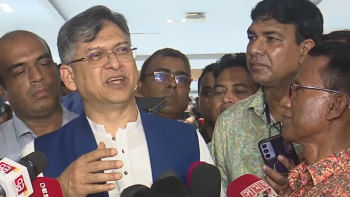
Comments